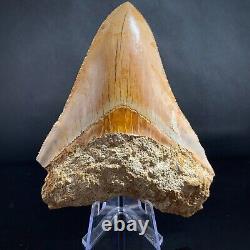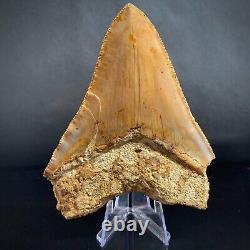Megalodon Shark Tooth 4.80 Real Unrestored Indonesian Fossil




Found in West Java, Indonesia. Negatives: The root is damaged, the blade on the left lingual side is missing, and the bourlette is damaged.
Positives: The tooth is very colorful and the serrations are very sharp. What did the Megalodon look like? The Megalodon looked very similar to a Great White, but there are are some. Key differences between these two species. Some of these differences include a.
Blunter nose, a more elongated mouth, a longer pectoral fin, and a very major. A good way to really exemplify the size of the Megalodon is to compare it. Again to the Great White.
A typical adult Great White measures around 15 feet. An adult Megalodon, however, is believed to have averaged around 50. The Scientific Classification of the Megalodon Shark.When Megalodons were first discovered in 1835, they were placed within the Carcharodon genus. This was because Megalodon teeth have similar serrations to those of Carcharodon carcharias. This original classification was very wrong, Megalodons are not part of the Carcharodon genus and don't even belong to the Lamnidae family!
(White sharks) Instead, Megalodons belong to the Otodontidae family and are members of the Otodus genus. This item is in the category "Collectibles\Rocks, Fossils & Minerals\Fossils\Vertebrates\Shark Teeth".The seller is "fossils_from_ray" and is located in this country: US. This item can be shipped to United States.
- Size: 4.80 inches
- Country/Region of Manufacture: Indonesia
- Species: Otodus megalodon
- featured refinement: Megalodon Tooth
- Modified Item: No
- Location: West Java, Indonesia


